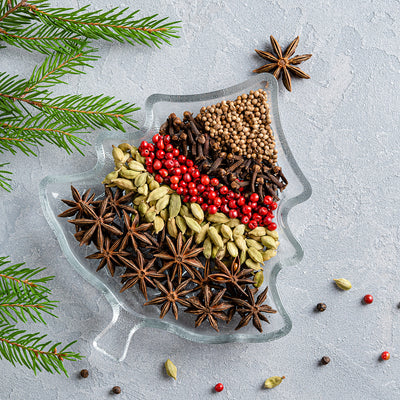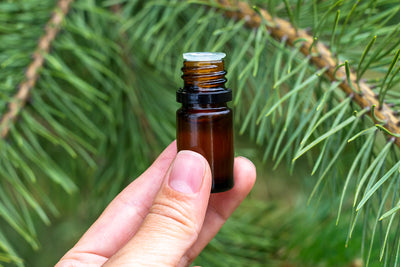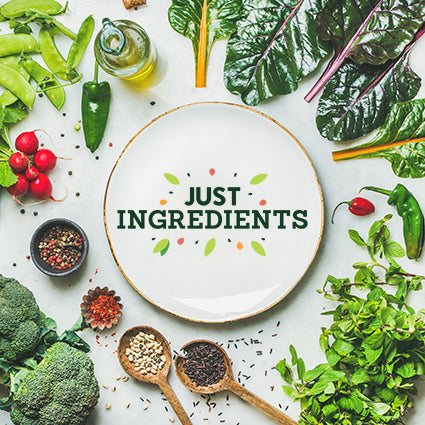From Farm-to-Fork: A Day In The Life Of An Organic Ginger Farmer 🧡
Ginger - the spicy, zesty root that can add warmth to your tea, zing to your stir-fry, and even soothe an upset stomach. But have you ever wondered how that knobby root makes its way from the farm to your kitchen?
Buckle up, because we’re about to embark on a flavourful journey through the world of ginger farming, where sustainability meets spice!
1. Planting the Seed (or rather, the Rhizome) 🌱
Unlike many crops that start from seeds, ginger begins its life as a rhizome, which is a fancy term for a piece of the root itself. These rhizomes are cut into small pieces, each with a bud or "eye," and planted in the soil to sprout new ginger plants. 
Selecting the Rhizome: Ginger farming starts with choosing high-quality, rhizomes. These are free from chemical treatments and genetically modified organisms (GMOs). Farmers pick only the healthiest, disease-free rhizomes to ensure a robust crop.
Planting: In early spring, when the soil is warm, the rhizomes are planted in rich, well-drained soil. Farmers enrich the soil with compost and natural fertilisers like manure or green manure (cover crops that are turned into the soil to add nutrients).
Pro Tip: Ginger loves warm, humid environments with plenty of rainfall, so it's typically grown in tropical or subtropical regions like India, China, and parts of Africa and South America.
2. Nurturing the Crop 👩🌾
Once planted, the ginger requires careful attention to thrive. Organic farming is all about working with nature, not against it, so every step in nurturing the crop is done sustainably.
Weed Control: Without chemical herbicides, organic farmers rely on manual weeding and mulching. Mulch not only suppresses weeds but also helps retain moisture in the soil—essential for ginger, which thrives in moist conditions.
Pest Management: Instead of chemical pesticides, organic ginger farmers use natural pest control methods. This might include introducing beneficial insects that prey on harmful pests, using organic-approved sprays made from neem oil or garlic, or simply planting companion plants that deter pests.
Watering: Ginger loves water but hates soggy roots. Farmers use efficient watering systems like drip irrigation to ensure the plants get enough water without wasting resources or waterlogging the soil.
Fun Fact: Ginger plants can grow up to four feet tall and have long, slender leaves. The plant also produces small, greenish-yellow flowers, though the root is the real star of the show.
3. Harvest Time: Digging Up the Goodness 🚜
After about 8-10 months, when the leaves begin to yellow and die back, it’s time to harvest the ginger. This is when the rhizomes are at their peak, packed with flavour and nutrients.
Harvesting: The process involves carefully digging up the ginger rhizomes from the soil. Since ginger is a delicate root, this is often done by hand to avoid damaging the crop. The harvested rhizomes are then cleaned to remove any remaining soil.
Organic Certification: At this stage, the ginger undergoes strict checks to ensure it meets organic standards. This involves tracing the ginger’s journey from farm to market, ensuring that no synthetic chemicals were used at any stage of its growth or processing.
Sorting and Grading: The ginger is sorted and graded based on size, shape, and quality.
4. Processing Organic Ginger: From Rhizome to Spice
After harvesting, ginger can be processed in various ways depending on its final destination—fresh markets, spice racks, or even medicinal uses.
Drying: To make dried ginger, the rhizomes are sliced and then dried in the sun or in dehydrators. Organic drying methods avoid using any preservatives or chemicals, ensuring the ginger remains pure and natural.
Grinding: Dried ginger can be ground into a fine powder, which is a versatile spice used in everything from cookies to curries. Ground Ginger is just as pure as the fresh root, with no additives or fillers.
Candied Ginger and More: Some organic ginger is also processed into candied ginger, ginger tea, or ginger extracts. These products must meet organic standards throughout processing, meaning no artificial colours, flavours, or preservatives are added.
5. Packaging and Distribution: Keeping It Fresh
The final step in the journey is getting that organic ginger packed but even in this last stage, organic principles guide the process.
Packaging: Organic ginger is usually packaged in materials that help preserve the freshness.
Labelling: The "organic" label on your ginger means it’s been certified by an organic certifying body (The Soil Association). This label isn’t just about what happens on the farm; it also means the ginger has been handled, processed, and packaged according to strict organic standards.
6. Cooking with Organic Ginger: A Spice with Benefits 👨🍳
Now that you know the journey of organic ginger, it’s time to enjoy the fruits (or roots) of this labour! Organic ginger not only adds a spicy kick to your dishes but also brings a host of health benefits.
Health Benefits: Ginger is famous for its anti-inflammatory and antioxidant properties. It’s also known to aid digestion, reduce nausea, and even help fight colds and flu. Organic ginger, free from synthetic chemicals, offers these benefits in their purest form.
Recipe Idea: Add fresh organic ginger to your stir-fries for a burst of flavor, or brew a warming ginger tea by simmering slices of ginger in water with a touch of honey. You can also sprinkle organic ginger powder into your baking for a spicy twist on cookies or cakes.
Fun Tip: For an easy and refreshing drink, add thin slices of fresh organic ginger to a pitcher of water with some lemon slices. Let it steep in the fridge, and enjoy a naturally flavoured water that’s as healthy as it is tasty!
Organic Ginger, Naturally Spicy and Sustainably Grown 🧡
The journey of organic ginger from farm to kitchen is a tale of careful cultivation, sustainable practices, and a commitment to quality. By choosing organic, you’re not only getting a spice that’s full of flavour but also supporting farming methods that are better for the environment, the farmers, and your health.
So the next time you sprinkle some ginger into your cooking, take a moment to appreciate the journey it’s been on. From the earth to your plate, organic ginger is truly a spice that embodies the spirit of natural goodness.
Happy cooking!





